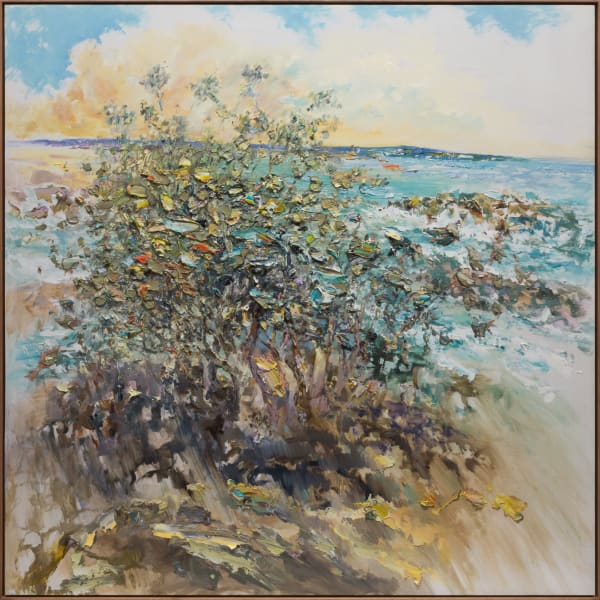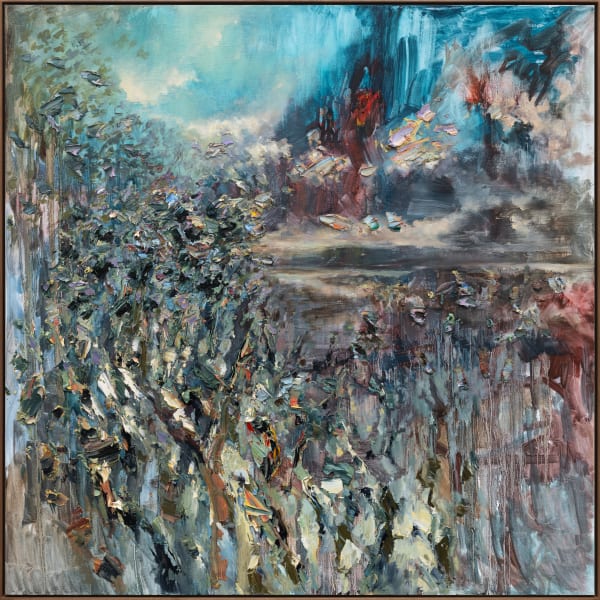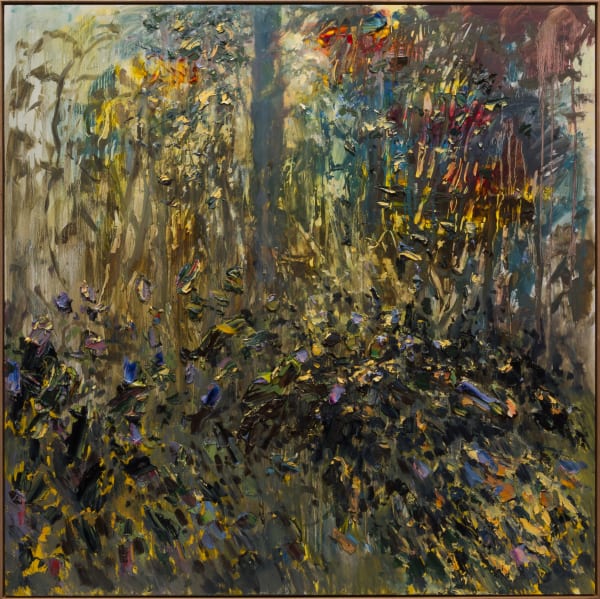Colin Pennock: Voice of Paradise
-
 Colin PennockJourney to Paradise, 2025oil on board330 x 800 cm (12 panels)Sold
Colin PennockJourney to Paradise, 2025oil on board330 x 800 cm (12 panels)Sold -
 Colin PennockJourney From Paradise, 2025oil on board122 x 122 cm, 124 x 124 cm (framed)
Colin PennockJourney From Paradise, 2025oil on board122 x 122 cm, 124 x 124 cm (framed) -
 Colin PennockLeprechauns and Serpents, 2025oil on board200 x 244 cm, 202 x 246 cm (framed)
Colin PennockLeprechauns and Serpents, 2025oil on board200 x 244 cm, 202 x 246 cm (framed) -
 Colin PennockVan Diemen's Land, 2025oil on linen90 x 90 cm, 92 x 92cm (framed)
Colin PennockVan Diemen's Land, 2025oil on linen90 x 90 cm, 92 x 92cm (framed) -
 Colin PennockVoice of Paradise, 2025oil on board122 x 244 cm, 124 x 246 cm (framed)
Colin PennockVoice of Paradise, 2025oil on board122 x 244 cm, 124 x 246 cm (framed) -
 Colin PennockColonial Lantern, 2025oil on linen90 x 90, 92 x 92cm (framed)Sold
Colin PennockColonial Lantern, 2025oil on linen90 x 90, 92 x 92cm (framed)Sold -
 Colin PennockWaterways and Firmament, 2025oil on board122 x 122 cm, 124 x 124 cm (framed)Sold
Colin PennockWaterways and Firmament, 2025oil on board122 x 122 cm, 124 x 124 cm (framed)Sold -
 Colin PennockShedding and Growing, 2025oil on board122 x 122 cm, 124 x 124 cm (framed)Sold
Colin PennockShedding and Growing, 2025oil on board122 x 122 cm, 124 x 124 cm (framed)Sold -
 Colin PennockTruth Telling, 2025oil on board122 x 122 cm, 124 x 124 cm (framed)Sold
Colin PennockTruth Telling, 2025oil on board122 x 122 cm, 124 x 124 cm (framed)Sold -
 Colin PennockLosing Paradise, 2025oil on linen122 x 122 cm, 124 x 124 cm (framed)
Colin PennockLosing Paradise, 2025oil on linen122 x 122 cm, 124 x 124 cm (framed) -
 Colin PennockAlong the Tangara Trail, 2025oil and gouache on board47 x 34 cm, 49 x 36 cm (framed)Sold
Colin PennockAlong the Tangara Trail, 2025oil and gouache on board47 x 34 cm, 49 x 36 cm (framed)Sold -
 Colin PennockTo the Scar Tree, 2025oil and gouache on board47 x 34 cm, 49 x 36 cm (framed)
Colin PennockTo the Scar Tree, 2025oil and gouache on board47 x 34 cm, 49 x 36 cm (framed) -
 Colin PennockNear Ochre House, 2025oil and gouache on board47 x 34 cm, 49 x 36 cm (framed)Sold
Colin PennockNear Ochre House, 2025oil and gouache on board47 x 34 cm, 49 x 36 cm (framed)Sold
When I was a kid – and even occasionally since then – I would sometimes have this experience where it felt like my body was massive. This would usually happen just before I fell asleep – in bed; eyes closed; awareness focused almost exclusively inwards. It’s a difficult sensation to describe – almost like I was swelling, until my sense of my scale in the universe shifted and I occupied far more space than I knew my body typically did.
From time to time I’ve tried to find out if this is a common experience – but really just by way of a superficial online search– giving up as soon as it was suggested that my mind was judging my relentlessly thin frame through a body dysmorphic lens. Unlikely. My curiosity never persisted beyond this Dr Google diagnosis. That is, until I sat down to write this short reflection on Colin Pennock’s work.
So, apparently there’s this thing called proprioception. It’s your sense of your body’s position and movement in space and it can be disrupted by a range of things – including hypnogogic states (the transition from wakefulness to sleep).
What’s that got to do with Colin’s work? Well, I got to thinking about scale and the bodily relationship to works of different sizes on my most recent studio visit with Colin. It’s almost impossible not to, given the contrast between works that zero in on intimate depictions of details within the natural environment, and the epic expanse of his wall-sized amalgam of reflections and impressions and place.
Colin’s intimate works encourage you to look closely – amplifying the sense that you’re looking in on something from the outside. The experience focusses your attention – asking you to look carefully and delicately (if that’s a thing). His larger works, by contrast, tend to envelope you – wrapping around you and drawing you into their space. Works at this end of the spectrum disrupt our tenuous place at the centre of things. These ways of seeing are not exclusive to extremities of scale, but they’re more easily recognised in those cases, and I like to think offer a gateway for training your eye in different and deliberate ways on dimensions in between.
But even more than that – irrespective of measurement – there’s something kind of dissociative or discordant in Colin’s paintings that resonates with that hypnogogic in-between space. I’ve avoided the word ‘landscape’ up until this point, even though that’s probably what these paintings are. But they’re not depictions of particular places – and often they fight against the logic of place and space altogether. A couple of vertical lines here and a horizontal there and suddenly a landscape punches out through a swarm of tantalising painterly marks. It's this point on the cusp of becoming something tangible that makes Colin’s works so engrossing – not abstract or real (not asleep or awake), but just gestures in between – sensations pushing against one another, on the edge of becoming something familiar or known – or dissolving and disappearing, depending how you think about it.
I guess that also describes the edge of sleep – perhaps the edge of lots of things. Maybe even life itself.
Michael Brennan
Gallery Director, Noosa Regional Gallery



















